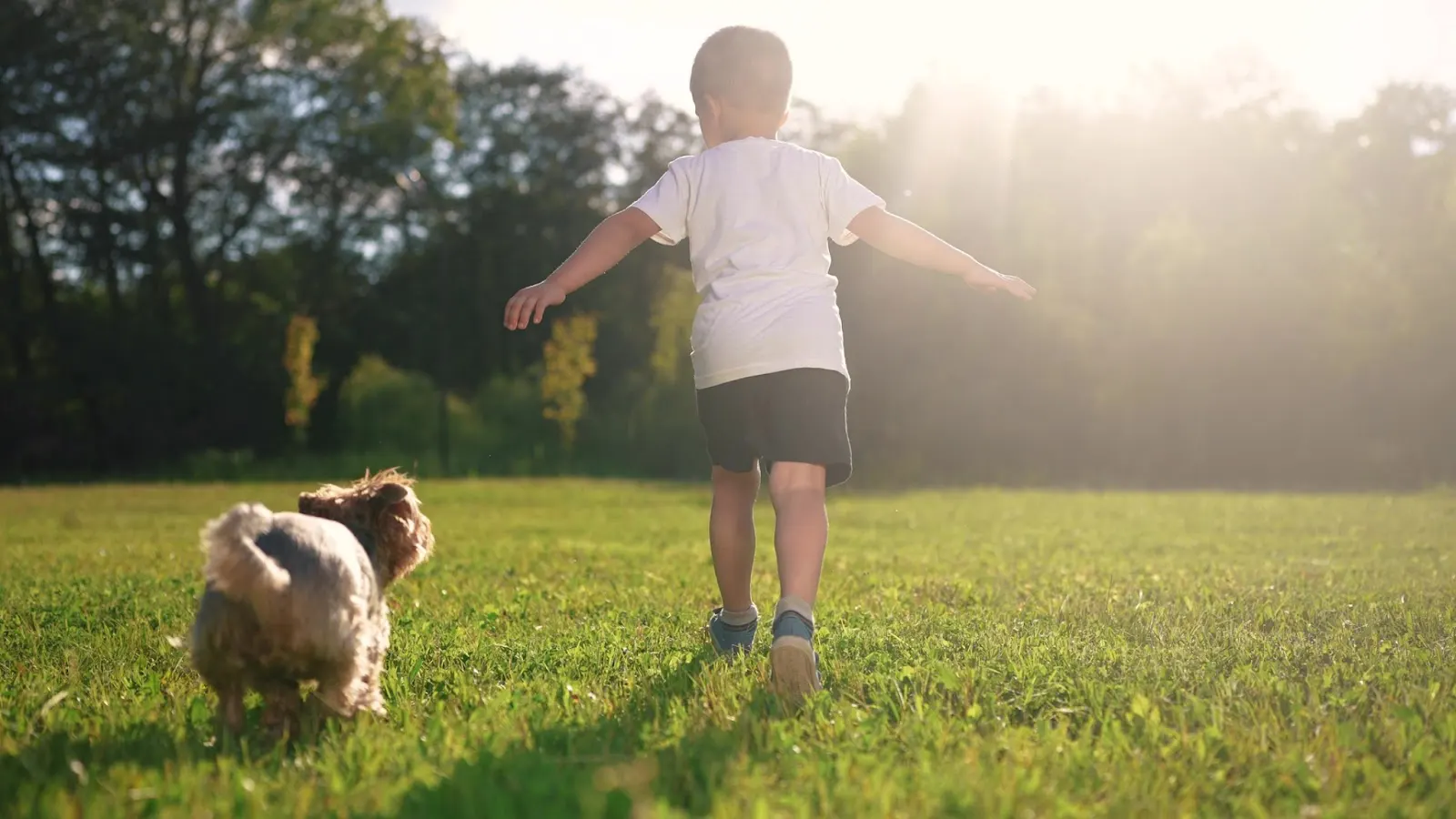Anyone who’s had a dog, or grown up with a dog, can probably rattle off a dozen ways they enrich our surroundings without even needing to stop and think. The joy they bring into our daily existence can perhaps be measured by the sadness and strong negative correlation we feel at the injustice of their tragically short lives.
Dogs are like four-legged Dalai Lamas. Living only in the present, they don’t dwell on the past nor worry about the future. They are highly aware of their surroundings and their senses are always fully engaged with what’s happening in front of their noses. Their unconditional love is unparalleled – they accept you as you are without exceptions, forgive easily, and don’t hold grudges. Equally zen-like is a dog’s ability to find joy in the simplest of things: a walk, a game of tug, a new squeaky toy or even a sliver of sunlight in which to bask on the floor. All of these small and mundane canine delights should remind us to have gratitude for the simple pleasures all around us that we routinely miss or choose to ignore.
A study by the American Heart Association found that adult dog owners have a lower risk of heart disease, lower blood pressure, and better overall cardiovascular health. These physical benefits are closely linked to mental health, as improved physical health often leads to enhanced mood and a reduction in stress and anxiety. None of this came as a surprise to me, having reaped all these benefits, and more, from a lifetime of dog ownership but it did make me ponder: could owning a dog also have positive mental health benefits for children and adolescents?Having a clinical psychologist on our advisory board who specializes in treating young people of all ages has its perks, so I went straight to the source. Nate Balfanz, PsyD, of Dr. Nate Psych here in San Clemente had coincidentally written about this exact phenomenon in a recent blog post on his website titled, “Barks for the Brain: Why Having a Pet is Healthy.” His article cites studies done at the University of Missouri-Columbia Center for the Study of Animal Wellness where they found that “physical interactions with our pets –petting, hugging, kissing, cuddling– help to promote the release of chemicals in our brain that can, in turn, elevate our mood and ward off feelings of anxiety or depression.”
When I asked how owning and caring for dogs could specifically help children and teens improve mental health outcomes, Dr. Nate detailed the benefits:
“As children emerge into the pre-adolescent/adolescent stage, there is a great deal of emphasis on their learning to master the skills of managing personal responsibilities, regulating emotional highs and lows, as well as nurturing relationships with others beyond those already established in the home setting. Pet ownership and companionship can provide teachable moments for our children to help develop all of these skills, which will be sure to come in handy in all facets of their later lives.”
Bolstering Dr. Nate’s professional takeaway on the topic was a study I found in the Journal of Applied Developmental Psychology called “One of the Family? Measuring Young Adolescents’ Relationships with Pets and Siblings.” The co-authors from the University of Cambridge found that pets may be especially significant to our youth, aiding them in their social and emotional development by providing opportunities to acquire skills such as empathy, responsibility, and caretaking. They concluded that pets may be especially well-suited to fulfilling people’s need to feel autonomous and competent, given their non-judgmental and unrestrictive nature – two of the major goals of adolescence.
The longer I searched, the more studies I found indicating that owning, loving and caring for a pet could provide children with therapeutic benefits for everything from anxiety disorders and ADHD, to depression and post-traumatic stress disorder (PTSD). My own bias about the benefits of owning a pet, specifically a dog, felt justified – but there was one more expert I wanted to speak to.
Ryan Furlet, owner of K-9 Guru, has been in the business of training dogs for over two decades. He has a calm and serene demeanor that belies the strength and confidence required to handle a pitbull or rottweiler in the red zone. We are grateful that he often takes the time to come into The Noble Path Foundation to educate the kids about basic canine care and obedience because an estimated 4.7 million people are bitten by dogs each year, with children accounting for approximately half of all dog bite victims according to the American Veterinary Medical Association,
“The best thing about dogs and kids,” says Ryan, “is that it provides a really powerful visual presentation on how life progresses. As the child grows, the dog grows – they learn the benefit of setting boundaries together.” I’ve found that listening to Ryan speak about the philosophy of dogs can lull one into believing they are sitting at the feet of a Jedi Master. He continues, “Teaching a teen how to train a dog is a lesson in learning how to be a strong leader. If you can direct a dog, learn to establish trust with a dog, you can learn to establish trust with others. By setting limits, you learn that boundaries are not just good for keeping bad things out – they also work well for keeping good things in.”
Yoda the Dog Whisperer then explains, “In the past there is regret. In the future there is worry. In the present is peace. This is where dogs live. Sometimes we don’t know what we’ve got until we lose it. Dogs always know. Watch a dog’s behavior and you’ll learn a lot about life.”
If you’re finally convinced that getting a dog is a good choice – not just for your kids mental and physical health but for the entire family’s – there is a lot to consider first. Ryan’s recommendations are this: “Be prepared for the time, commitment and financial responsibility that comes with owning a dog. You are often looking at a 10-12 year commitment and sometimes 15 to even 18 years. You must be prepared to love that dog when he is old and has hip dysplasia, as much as when he is an irresistible puppy. Try to pick a dog that matches your family’s culture and lifestyle. Consider your own skills when it comes to training. If you are super active and outdoorsy, then maybe a vizsla would work. If you want to hit the water with your dog, then you might not want to pick a bulldog.”
In summary, the “pawsitive” effects of dog ownership can be numerous and beneficial. It also comes with great responsibility and dedication. The number of animals dumped at local shelters from people who have ceased to want to care for them is heartbreaking. Let’s do better by letting compassion and kindness be our guides. May we strive to live in a world where we wag more, bark less, and exist joyfully in the present. Let’s be more like dogs.
#
Cindi is President and Founder of The Noble Path Foundation, a 501(c)(3) located in San Clemente, CA, dedicated to helping the youth of our communities reach their highest potential via healthy nutrition and lifestyle choices, safe and fun social activities, and motivational mentoring. For sources and links to the statistics mentioned in this article, please visit our website and search for the article under our blog at www.thenoblepathfoundation.org.


